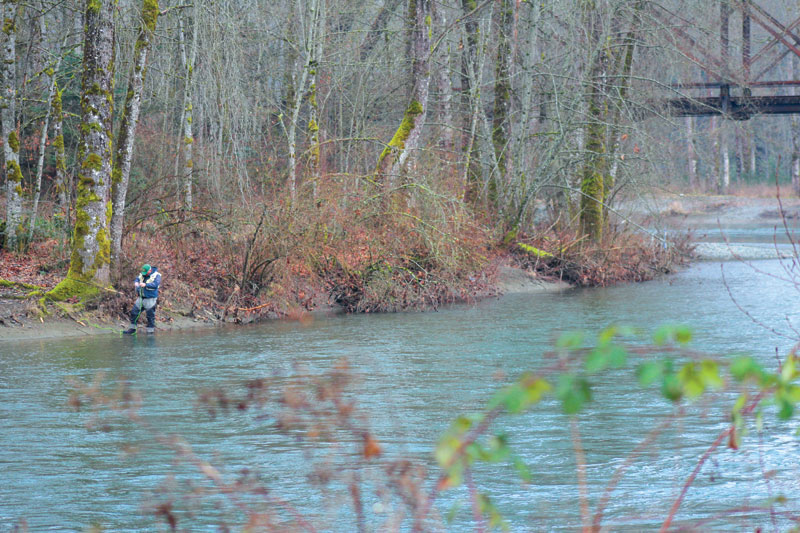The increasing pressures of population growth, pollution, and a changing climate, coupled with strong demands for more local control, are making it increasingly apparent that fresh water must be governed in new ways. Across the country, governments at all levels are responding to these pressures by implementing new decision-making arrangements. Collaborative watershed governance is a potentially powerful and innovative model. It involves reorganizing decision-making to create more inclusive processes that better align with the ecological boundaries of watersheds rather than arbitrary political borders. It also involves addressing watershed health and function as a priority.
Although transformative change at this scale is an inevitably slow process, change is clearly occurring. Recent research and an ever-expanding conversation at the local level reveal a strong and, most importantly, growing interest in watershed-based governance.
Governments are maxed out in terms of their capacities to deliver on existing commitments, let alone being able to take on new governing activities, and new priorities and challenges are always emerging. At the same time, people from diverse backgrounds—including academia, practitioners, grassroots groups, and government at all levels, including First Nations—are reimagining how decisions about both water and watersheds are made and, critically, who makes them.
From theory to implementation
Despite this interest in shifting toward watershed-based decision-making, practitioners acknowledge that their organizations do not currently have sufficient skills, funding, or capacity to widely adopt a comprehensive watershed governance model.
This theme of capacity building was the central thrust at the national Watersheds 2014 forum, which was held January 2014 on Cowichan Tribes territory in Duncan, British Columbia. The event was designed to build capacity for freshwater protection, with an explicit focus on watershed governance. Nearly 200 delegates from across Canada—plus 75 virtual participants—re-envisioned the way we collectively use, share, and respect our freshwater and watershed resources. It initiated discussion about who needs to be part of the decision-making fabric, what additional skills and knowledge are needed going forward, and which new approaches and institutions are required to guide communities through the 21st century of water management and governance.
Coming out of the forum, the message was clear: mounting concern about the sustainability of our water future, coupled with a growing interest from communities and citizens, is driving the demand for more local engagement and for stronger First Nations involvement in decisions. Following up on the event, a Watersheds 2014 Forum Consensus summary document (bit.ly/watershed2014) was developed and captures a common sentiment about these issues. One important complexion of the collaborative watershed-based approach is the integration of notions of resilience (the ability to deal with crises and change) into planning and governance processes at all levels of government and community action.
Winning conditions
Developing new institutions and embedding watershed governance is neither a quick nor an easy process. For watershed governance to function effectively, our research has identified nine winning conditions that, when implemented together, increase the likelihood of achieving the goal of protecting and, in some cases, restoring watersheds:
1. Enabling powers in legislation;
2. Co-governance with First Nations;
3. Support from and partnership with local government;
4. Sustainable long-term funding;
5. A functioning legal framework for sustainable water and watershed management;
6. Availability of data, information, and monitoring;
7. Independent oversight and public reporting;
8. Assessing cumulative impacts; and
9. Continuous peer-to-peer learning and capacity building.
A critical conclusion from the January 2014 policy and governance report A Blueprint for Watershed Governance in British Columbia (poliswaterproject.org/blueprint)—published by the University of Victoria’s POLIS Project on Ecological Governance—is that beginning the process requires collaboration between key stakeholders, rights holders, and all governments, including local First Nations or other indigenous governments. Whatever form these new governing bodies might take, they must be designed to be accountable, financially sustainable, and nimble in their ability to respond to the emerging challenges and shifting priorities they will inevitably face. Ensuring these cornerstones are in place will help build the local legitimacy needed for these bodies to make decisions that will impact the ecological, social, and economic health of their watersheds.
Looking forward
The challenge lies in not being afraid to embark on reforms of policies and decision-making structures that ensure critical attention to ecological health and function. Watershed governance is a long-term process that will take a collective effort. But an increasingly wide range of individuals are already rolling up their sleeves and getting to work. Nothing less than the future of our water is at stake. WC
Laura Brandes is the communications director at the POLIS Water Sustainability Project at the University of Victoria. Oliver Brandes is the co-director of the POLIS Project on Ecological Governance at the University of Victoria (UVic) and leads the POLIS Water Sustainability Project. Michele-Lee Moore is an assistant professor in the University of Victoria Department of Geography and leads the Water, Innovation, and Global Governance Lab at UVic’s Centre for Global Studies.
This article appears in Water Canada’s July/August 2014 issue.














great to hear this need coming out in such high-profile ways. why do we need this kind of ‘fresh perspective’? because the current system has failed to protect the waters – treating them as a resource, an asset, playground, or sewer – rather than a commons. a commons is what we inherit, share, and pass on together and acting like a ‘commoner’ is the way forward. help us apply this need to the Great Lakes and let’s collaborate on this watershed thinking (and acting).